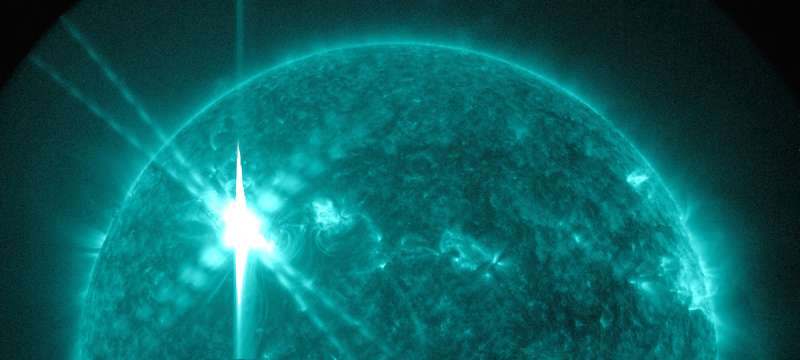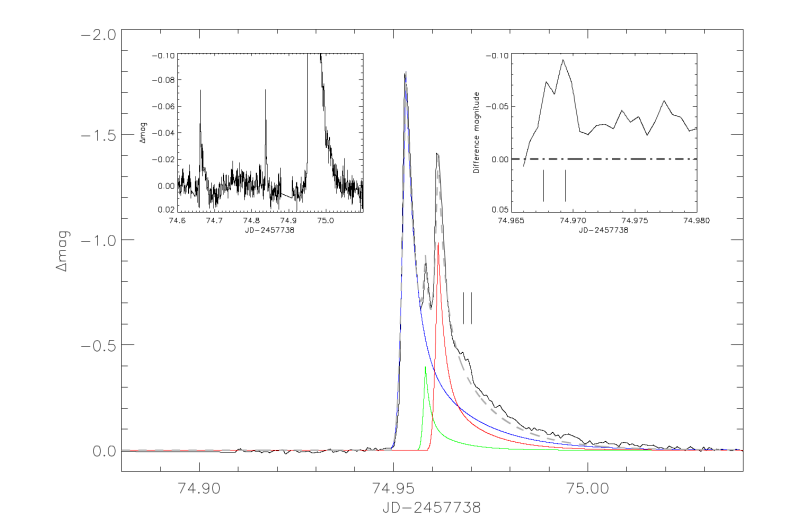Frequent flaring on TRAPPIST-1—unsuited for habitability?

Data from the K2 mission reveals strong stellar magnetism in the TRAPPIST-1 system that hosts three potentially habitable planets, suggesting that those planets could be a less friendly place for life.
TRAPPIST-1 is a nearby cool red dwarf star called an M-dwarf, a mere 39 parsecs away from the sun. The star recently made headlines with the discovery of its complex system of seven planets, three of which orbit in the habitable zone of the host star. The lowest age estimate of the system, about 500 million years, makes the formation of basic life possible – the oldest life form known on Earth dates back to ~4 billion years, when the sun itself was only about 500 million years old.
Researchers from the Konkoly Observatory of the MTA CSFK (Budapest, Hungary), led by astronomer Krisztián Vida, studied the extensive raw photometric data of TRAPPIST-1, obtained during the K2 mission of the Kepler space telescope. The light curve shows several energetic flares during the 80-day-long observations. These events are the result of stellar magnetism, when magnetic flux ropes reconnect in the stellar atmosphere, resulting in sudden release of energy that can be observed as brightening of the star. These can be mainly observed in high-energy regimes—X-ray or UV—but the strongest ones can also be detected in white light.

The energy distribution of the 42 observed flares shows that TRAPPIST-1 belongs to the more active group of M-dwarfs. The strongest eruption emitted energy at roughly 1033 ergs in white light, which is in the order of the largest flare ever observed on the sun, the so-called `Carrington-event' in 1859 that caused auroras in the tropical regions and set telegraph lines on fire. The planets in the TRAPPIST-1 system, however, orbit much closer to their host star (between 0.01-0.06 AU) than Earth, so they are influenced much more by these energetic events.
Vida and his authors evaluated the possible effects of the strongest flare detected on TRAPPIST-1 on the orbiting exoplanets, building upon the recent work of Olivia Venot (Leuven Catholic University), who modeled the effects of flares on planetary atmospheres. The group concluded that such an event would irreversibly alter the planetary atmospheres, and, since the eruptions happen quite often, the atmospheres would never reach a steady state.
A strong enough planetary magnetosphere could still shield the atmospheres from the harmful effects, but theoretical calculations suggest that planets similar to those in the TRAPPIST-1 system would need unrealistically strong magnetic fields in the order of tens to hundreds Gauss (the magnetic field of Earth is about 0.5 G). These findings suggest that the TRAPPIST-1 system could be less suitable for hosting life.
More information: Vida et al.: Frequent flaring on TRAPPIST-1 - unsuited for habitability?, submitted to the Astrophysical Journal for review. arxiv.org/abs/1703.10130
Journal information: Astrophysical Journal
Provided by Konkoly Observatory




















